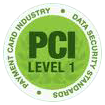A guide to understanding the differences (and benefits) of loading-an-offer-to-loyalty cards vs. linking-an-offer-to-payment-cards and how exactly the mobile wallet fits into all of this
As digital coupons continue to see dramatic growth, clarification is needed to explain the differences and benefits of the various redemption methods of digital coupons. We will examine how loading-an-offer-to-loyalty-cards vs. linking-an-offer-to-payment-cards differ and later discuss how the mobile wallet comes into play in each of these scenarios.
A payment card is defined as a consumer’s credit or debit card, whereas the loyalty card is the card or key-tag issued by a specific retailer, most prevalent in supermarkets.
A load-to-loyalty card offer can be boiled down to a digital coupon. Consumers have the ability to view a set of offers by visiting a specific retailer’s website or by browsing an app such as the SmartSource Express Coupons iPad app (which I might add is awesome; limited to a handful of grocery stores, but nonetheless still awesome and worth checking out).
The consumer can then select the coupons of interest and “load” the coupons to their pre-registered loyalty card. When the time comes for the consumer to go to the store and purchase the item(s), all you need to do is use your store loyalty card during check-out and you automatically receive the predetermined discount.
A link-to-payment card works in a similar fashion, although a payment card can be either a credit or debit card. A consumer views a set of offers by visiting a specific retailer’s website or browsing an app such as the SmartSource Express Coupons. The consumer then selects or links the offer to their credit or debit card. Once the discounts have been added to the credit or debit card, the consumer is then able to shop for and buy the selected items. The catch…..you must use the preregistered credit or debit payment card.
Similar right? Both methods eliminate the need to have to clip, print and carry paper coupons and also make the consumer carry a preregister card to the retailer. Both methods also leverage the convenience of accessing offers from a website rather than having to purchase various Sunday newspapers and spend time clipping, sorting and remembering to bring the coupons to the store.
Now let’s take a look at how these two methods differ.
The most striking difference is where a consumer can redeem a load-to-loyalty card offer. An offer loaded to a store’s “rewards” card or key-tag is redeemable at that one particular retailer. Because of this limitation, consumers end up signing up for multiple loyalty programs at multiple retailers and then load the same offer to more than one loyalty card, not to mention carry around a key chain or wallet full of cards. This doubles or triples your efforts. The redundancy of re-selecting and re-loading offers to allow for choice of grocery stores to visit is not ideal for anyone, least of all a time strapped consumer looking to save money. But since the vast majority of consumers carry several stores’ loyalty cards, this is and has been the reality. But times are changing!
For the consumers who maintain a fierce loyalty to a single retailer, this is a dilemma they don’t face. However, the retailer already counts on this consumer’s repeat business. The retailers are not gaining any new consumers or capturing trips and sales from semi-loyal shoppers.
Now, let’s take a look at the alternative method; linking an offer directly to a payment card. In this approach, a consumer can link an offer, say $0.50 off a 12 pack of Coca-Cola, and redeem this offer at any participating retailer. How easy is this? Consumers these days pay with plastic more than cash, so why not link your card?
Besides this method being easier for the consumer, linking to payment cards offer the retailer an interesting advantage as well – it allows the retailers to target semi-loyal customers with stronger offers in order to capture the shopping trip.
Perhaps the overall advantage for everyone involved, the consumer, the retailer and the manufacturer (ex: Coca-Cola), is that a consumer can link an offer during their shopping experience. With most purchase decisions being made during the consumers shopping experience, the ability to influence purchases at the decision point is invaluable. Link-to-payment card apps also provide consumers a list of linked offers to refer to while they shop.
The CPG companies in particular see advantages by viewing transactional data across all retailers, no longer constrained by what data a single loyalty card retailer will allow them access to.
What if your favorite store is Whole Foods, Publix, Trader Joe’s or Wal-Mart? These stores and many others do not issue loyalty cards. Link-to-payment card provides a perfect solution to digital coupon issuance for non-loyalty card retailers.
So, now let’s move on to all this speak about Mobile Wallet………and how does it pertain to these load-to-cards?
How does the advent of the mobile wallet work with load-to-loyalty and link-to-payment cards? With load-to-loyalty cards, there is no integration. It’s left out as it’s a completely separate function. While apps exist that allow consumers to load offers to virtual loyalty cards, all the drawbacks remain intact. Consumers still need to scan the discount offers available at the retailer before heading to the store and they still need to load them onto their various loyalty cards.
This is all possible because the mobile device is linked to the credit/debit card account and the offers are linked directly to the credit/debit account. Make sense?
Get onboard or you’ll be left at the dock!
If you’re a retailer or consumer packaged good company, you’ve seen the growth of load- and linked-digital coupons, in fact according to coupons distributed and tracked on NCH database, digital coupons grew by 11% in 2011, and the trend is accelerating in 2012. The question is, on which method are you going to place your bet?






